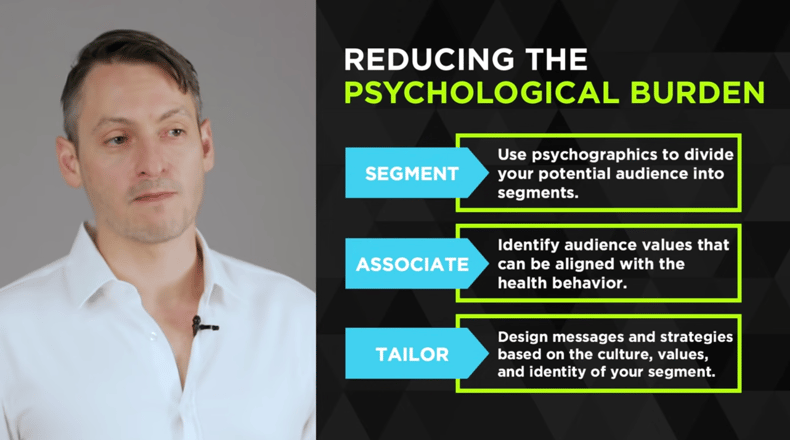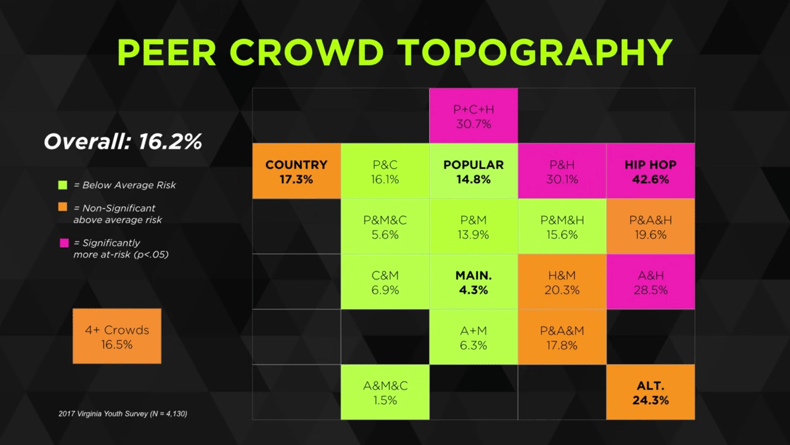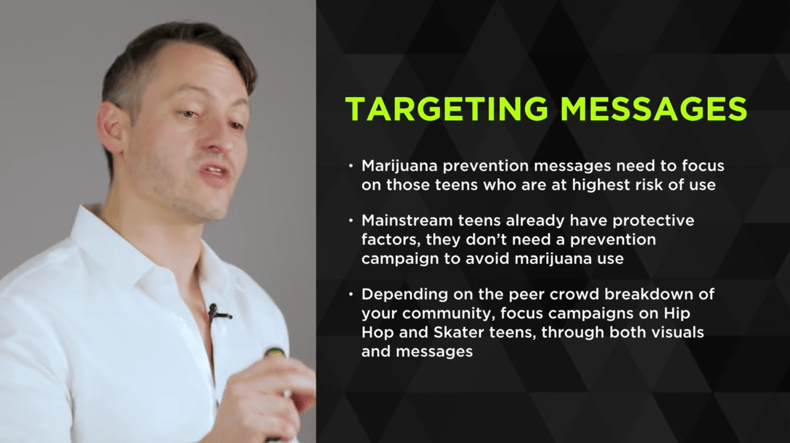New Digital Learning Opportunities
Discover upcoming behavior change webinars rescueagency.com/webinars
Often, statewide public health campaigns to discourage underage cannabis use have been designed to reach “all teens,” assuming that they are equally at risk and can all be reached with a single message. However, teen peer crowd research shows that teens are not homogenous, and their risk levels vary widely. Teens use cultural cues to decide whether or not to pay attention to your message, and simply including teens in your messaging is not enough.
In this video, Rescue Founder, President, and Executive Creative Director Jeff Jordan walks through teen cannabis use research to understand who’s at the highest risk. Then, it discusses the values and interests of at-risk teens, to help you better develop your next cannabis prevention campaign.
1:13 Behavior change marketing is about reducing the burden of change for our target audience. There are physical burdens like cost, environment, access, safety, and ability, as well as psychological burdens, such as knowledge, skill, relevance, norms, and identification to overcome. Tune in here to learn more.
4:12 Today’s youth-focused cannabis prevention efforts don’t talk enough about the relevance of social norms and identification. For many young people who choose to use cannabis, it has to do with their normative beliefs about the groups that they belong to and their own identity about what they think they need and who they think they are.
6:53 Not all teens are at equal risk of using cannabis. The question is: who are the teens that we can impact through a public health campaign? Once we identify that group, we can tailor our messages to best reach them. Jeff outlines how to get started.

11:57 Using psychographic information, we can segment teens into specific peer crowds, or the macro-level connections between peer groups with similar interests, lifestyles, influencers, and habits. Here, Jeff discusses the five most common peer crowds and how they differ from each other.
18:08 When we look at cannabis use among teens in Virginia, we can see clear differences by peer crowd. Jeff explains how to use this data for developing messaging campaigns in Virginia. He also dives into data gathered from teens surveyed in Vermont.
23:05 We can take the data gathered from teen surveys to separate out how teens overlap across different groups and see where the spread of risk is coming from, like a topography of culture. This enables us to see where the risk behavior is culturally coming from, so we can go there, cause change, and expect the social norms to spread. Here, Jeff explains how this cultural topography works, and how you can use it to target your youth prevention messages to the groups who need it most.

READ MORE: Learn about our approach to promoting healthy behaviors to at-risk audiences.
33:06 These data points are crucial for helping us understand where cannabis risk is coming from so we can combat it. When we create campaigns that try to reach everyone, we end up targeting mainstream teens, who are least likely to use cannabis out of all the peer crowds. Tune in here to learn how you can use all of this information to create messages that are tailored to the peer crowds who need them the most and avoid “lowest common denominator creative.”
34:42 Jump in here to hear three key ways you can start to develop targeted, effective youth cannabis prevention campaigns that drive behavior change in your community.

If you’d like to learn more about our cannabis prevention campaigns, please visit our cannabis health communications web page.
RESCUE HEADQUARTERS: 2437 Morena Blvd San Diego, CA 92110 - (619) 231-7555 - Privacy Policy
Copyright © 2026 Rescue Agency, Public Benefit LLC. All Rights Reserved. Social Branding ® and Evolvement ® are registered trademarks.
Join our email list to learn new strategies for improving the health of your community. Please complete the form below to opt in to receive emails from Rescue Agency.
* indicates required